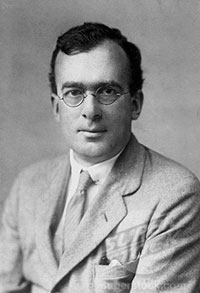Douglas Hartree
Born March 27, 1897, Cambridge, UK; died February 12, 1958; designer, with A. Porter, of the Manchester Meccano differential analyzer. Very influential early British computer user at both Manchester and Cambridge, and originator of the method of self-consistent field.

Education: BA, University of Cambridge; MA, University of Cambridge; PhD, University of Cambridge; MSc, University of Manchester.
Professional Experience: Antiaircraft Experimental Group, Inventions Department, Ministry of Munitions, 1916-1919; research fellow, St. John's College, Cambridge, 1924-1927; research fellow, Christ's College, Cambridge, 1928-1929; University of Manchester: professor of applied mathematics, 1929-1937, professor of theoretical physics, 1937-1945; professor of mathematical physics, University of Cambridge, 1946-1958; on leave, acting chief, Institute of Numerical Analysis (INA), National Bureau of Standards (at UCIA).
In 1933 Hartree visited MIT to use the Vannevar Bush Differential Analyzer. As a result of this work he received a copy of the design, which he then used to create his own model using Meccano parts, and costing about £20, a tiny fraction of the expenditures at MIT. This machine was so successful that several copies were made and used throughout the country. Hartree used his influence to promote the mechanical solution of differential equations as related to a wide range of applications from ballistics to atomic energy.
BIBLIOGRAPHY
Biographical
Douglas, Sandy, "Some Memories of EDSAC 1: 1950-1952," Ann. Hist. Comp., Vol. 1, No. 2, 1980, pp. 98-99, 208.
Medwick, Paul A., "Douglas Hartree and Early Computations in Quantum Mechanics," Ann. Hist. Comp., Vol. 10, No. 2, 1988, pp. 105-112.
Significant Publications
Hartree, D. R., Calculating Machines-Recent and Prospective Developments, Cambridge Univ. Press, Cambridge, U& 1947.
Hartree, D. R., "Automatic Calculating Machines," Mathematical Gazette, Vol. 34, Dec. 1950, pp. 241-252.
UPDATES
Portrait added (MRW, 2013)
New content Copyright © 2013-2023 by the IEEE Computer Society and the Institute of Electrical and Electronics Engineers Inc.
All rights reserved. This material may not be reproduced or redistributed without the express written permission of the copyright holder.
